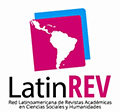Audiovisual access systems for people with sensorial disabilities and their development in Uruguay
DOI:
https://doi.org/10.22235/d.v0i18.362Keywords:
accessibility, disability, Universal Design, Uruguayan Sign Language, audio description, subtitledAbstract
Accessibility, which has historically been linked to the access of disabled persons to physical environments, also expands its scope to the field of information and communications. There are accessibility systems that help sensory disabled to the access to audiovisual content and other cultural products. These systems, developed for decades in USA and Europe, are subtitling and sign language for the deaf and hard of hearing, and audio description for the blind and low vision. This article describes how these systems work, what do they mean from a perspective of rights of persons with disabilities under the paradigm of Design for all, and reconstructs what experience has been developed in Uruguay.Downloads
Downloads
Published
How to Cite
Issue
Section
License
Copyright (c) 2013 Dixit

This work is licensed under a Creative Commons Attribution-NonCommercial 4.0 International License.
From issue number 32 onwards all contents are licensed under the Creative Commons Attribution 4.0 International License (CC BY 4.0).
Issues number 29-31 are licensed under the Creative Commons Attribution-NonCommercial 4.0 International License.
The contents corresponding to number 28 and earlier editions are under the Creative Commons Attribution-NonCommercial-ShareAlike 4.0 International License.


















